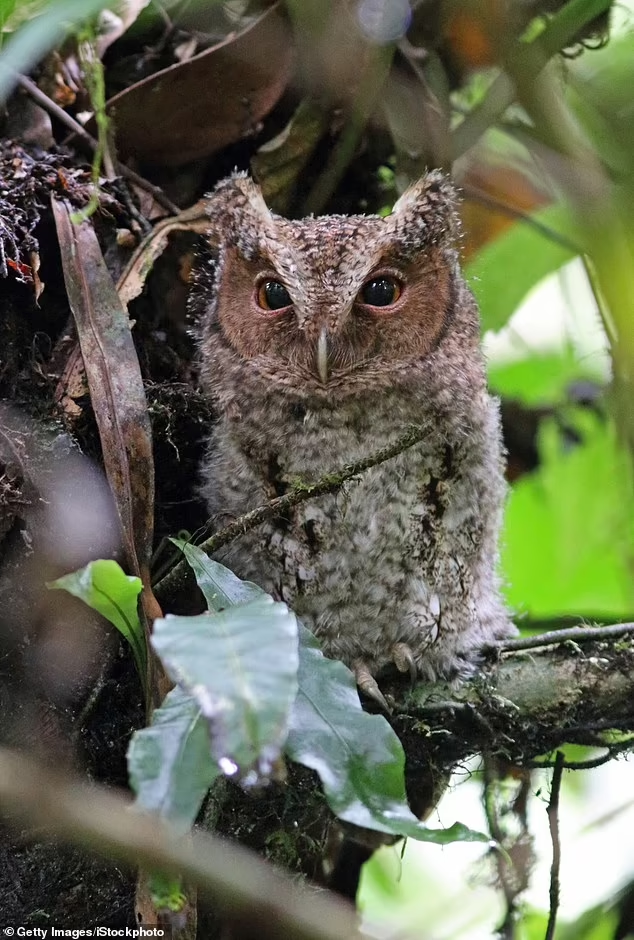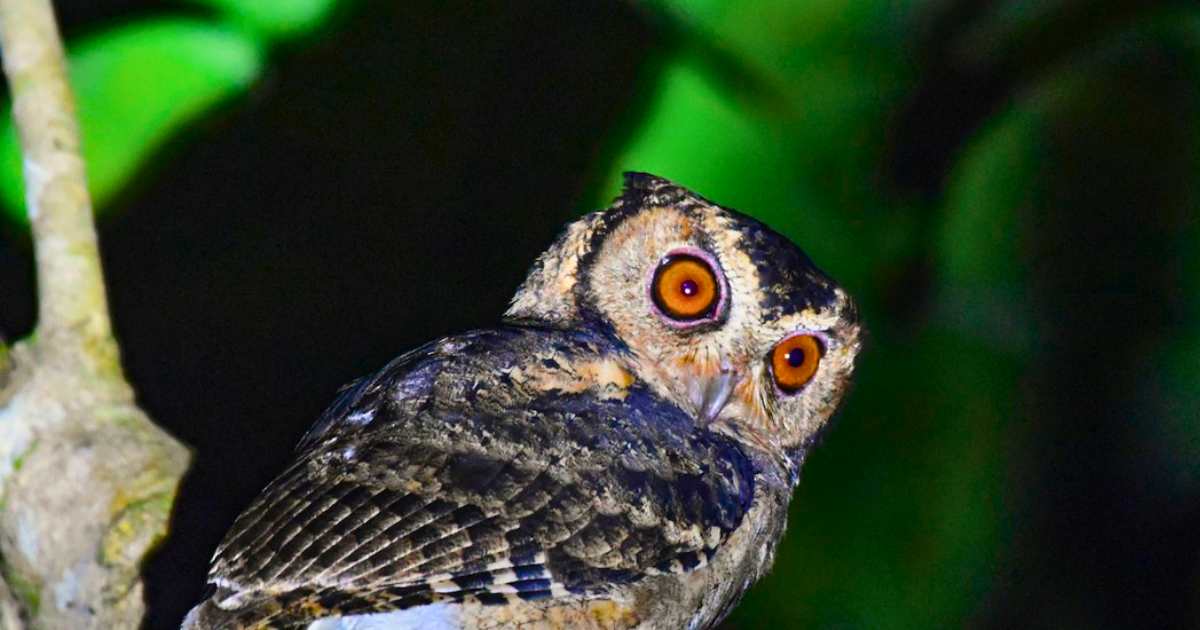Rare orange-eyes owl sightings don’t happen every day, but in the lush rainforests of Malaysia, nature has delivered an astonishing surprise. For the first time in over 125 years, the orange-eyed Rajah scops owl, a mysterious and beautiful tropical bird, has been seen and photographed in the wild. This incredible moment has thrilled bird lovers and conservationists worldwide, reminding us just how much remains hidden within our planet’s incredible wildlife.
The Return of a Forgotten Owl
In May 2016, deep within the ancient forests of Mount Kinabalu in Sabah, Malaysia, technician Keegan Tranquillo made a discovery that would make history. While searching for bird nests as part of a research study on avian evolution, he caught sight of an owl with brilliant orange eyes—a feature unlike the yellow-eyed owls typically found in the region. The bird quickly vanished into the thick vegetation, but luck was on Tranquillo’s side: the owl soon returned, giving him a rare second chance to observe and document this amazing animal.

It was only after expert consultation with ecologist Andy Boyce, now with the Smithsonian Migratory Bird Center, that the bird was confirmed as the Bornean Rajah scops owl. This elusive owl had only been seen once before, when it was first described in 1892 by British ornithologist Richard Bowdler Sharpe. More than a century had passed with no sightings—until now.
Related Inspiration:
Full Story: Man Loses 360 Pounds Naturally—Internet Rallies to Support His Next Step
Why This Rare Owl Matters
Weighing just four ounces and measuring up to nine inches tall, the rare orange-eyes owl may be small, but its impact is huge. The fierce-looking bird, with a furrowed brow and striking black chest streaks, is a testament to the mysteries that still exist in our natural world. Ornithologists believe that Borneo’s orange-eyed Rajah scops owl may even be a new species, separate from its Sumatran cousin, which has yellow eyes.
Yet, for all its wonder, this animal is a stark symbol of what’s at stake for our planet’s wildlife. The mountain forests that are home to this owl face severe threats from habitat loss, climate change, and palm oil plantations. The survival of this unique species—and countless other animals—depends on the protection and rescue of these fragile ecosystems.
The Challenges of Wildlife Conservation
Scientists know almost nothing about the Rajah scops owl’s population size, breeding habits, or even its call. With only two sightings in over a century, every detail counts. The International Union for Conservation of Nature lists the bird as “least concern,” but experts warn this is likely inaccurate. Real conservation requires deep knowledge—and as ecologist Andy Boyce says, “We can’t conserve what we don’t know exists.”
This story is more than just about one rare owl. It’s a reminder that, even in an age where humans seem to have touched every part of the globe, nature still has secrets to share. Sometimes, the world’s most extraordinary animals are hiding in plain sight, waiting for someone to notice.
You Might Also Enjoy:
Tammy Hembrow’s Bikini Photos Are Stirring Controversy—Here’s Why Everyone’s Talking
Conclusion: Hope for the Future
The rediscovery of the rare orange-eyes owl is a thrilling victory for science and a rallying cry for conservationists. It shows that the fight to protect wildlife and nature is never in vain, and that with continued effort, even the most elusive species can be saved. As we celebrate this incredible rescue from obscurity, we are reminded to keep searching, keep learning, and keep fighting for the animals that share our world.



